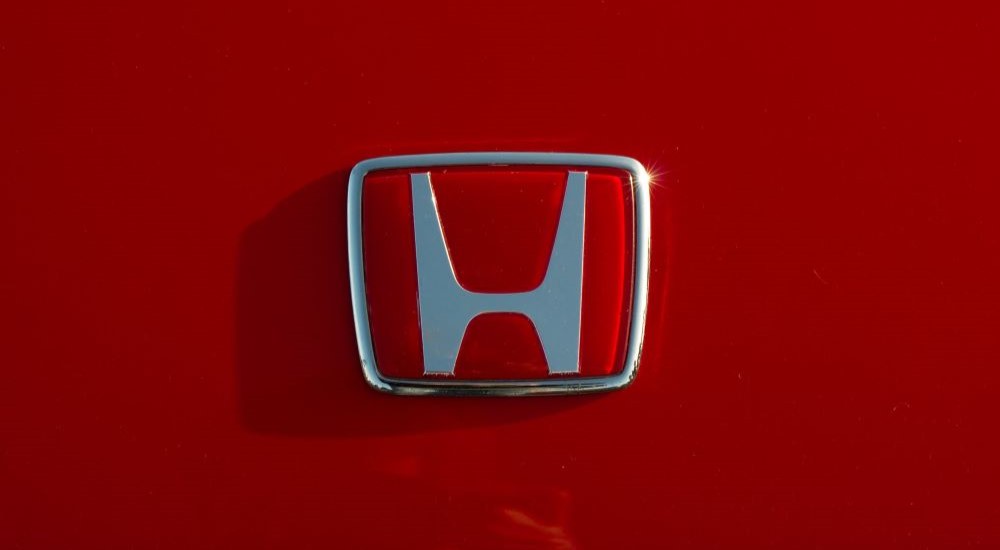Today, if you think about a sporty compact Honda, you’re probably picturing some variant of the Civic, perhaps an Si or Type R. But back in the day, you could very well have thought of the Honda Prelude, a sporty model that served as Honda’s response to the then-popular Toyota Celica and went on to gain its own reputation for dazzling driving dynamics and plenty of unique high-tech features over the five generations it was in production. The Prelude has a fascinating history that’s worth revisiting if you remember the model or are exploring it for the first time. Let’s take a trip down memory lane to see how the Prelude changed over the years and what may be in stock for the future.
The Prelude Hits the Streets: First Generation (1979-1982)
Honda didn’t immediately strike gold with the Prelude. The first generation left a lot to be desired. It basically took the major components of an Accord (including the engine, suspension system, and brakes) and incorporated them into a more compact body with a long hood. Putting a powerful engine into a small and lightweight body is certainly not a bad start for a sports car, but more attention could have been put into refining the design and optimizing performance. Its 72 hp and quarter-mile time of 19 seconds weren’t nearly as disappointing back then as they would be by today’s standards, but it was distinctly average. Pair that with an above-average price point, and you can understand why the Prelude didn’t immediately become a bestseller.
Not everything about the first-gen Prelude was forgettable, though. It was the very first Honda model to offer a moonroof as a standard feature, giving the sporty coupe something of a convertible feel. The original version also features side mirrors that stick out of the hood like insect antennae instead of being mounted on the doors. While the Prelude would maintain the moon roof throughout its run, the strange placement of the exterior mirrors was an oddity that didn’t stick around beyond the first generation.
Improvements Across the Board: Second Generation (1983-1987)
Just about everything about the Prelude was improved for the second generation (unless you’re a fan of those quirky mirrors, that is). The styling was much more refined the second time around—while it still has plenty of sharp angles, they come together to form a body that’s sleek rather than boxy. The performance also improved significantly, thanks to a new 100 hp engine and a suspension system designed for the Prelude instead of borrowed from the Accord: a double wishbone suspension up front coupled with an independent strut in the back. Not only was the new Prelude more powerful, but it also handled quite well, delivering an impressive overall driving experience.
In the 1985 model year, the Prelude Si became one of the first two Si variants available in the US, starting off a tradition of high-performance variants that continues to this day with the Civic Si. The Prelude Si has a larger and more powerful engine with fuel injection instead of carburetors. Combined with the improvements already made for the second generation, this proved to be a winning combo that is still admired by enthusiasts today.
Cutting-Edge Steering: Third Generation (1988-1991)
For the third generation, handling got even better thanks to a technology that was cutting edge at the time: four-wheel steering. Generally, the steering wheel only moves a car’s front wheels, but four-wheel steering moves the rear wheels as well. While this may seem simple at first, it gets more complicated when you realize that different circumstances call for different wheel positions. At low speeds, these systems typically turn the front and rear wheels in opposite directions, allowing the driver to make sharper turns for easier maneuvering in tight spaces. But at high speeds, turning the front and rear wheels in the same direction improves stability and results in more responsive handling.
Some contemporary rivals (including Mazda and Mitsubishi) were also using four-wheel steering on their sports cars, but with an electronic system that could be unreliable. After all, computers weren’t exactly known for dependability back in the 1980s. Honda’s use of a fully mechanical system allowed it to offer an alternative that was both more reliable and cheaper, which is always a nice combination if you can manage to pull it off.
As is generally the case with sports cars, power also continued to climb as the Prelude evolved. The standard model upgraded to a 104 hp engine while the Si became capable of cranking out 135 hp. The shape of the body remained largely the same, though a new layout for the headlights dramatically changed the look of the face.
Sanded-Down Corners: Fourth Generation (1992-1996)
While engineering improvements did continue to make the Prelude faster and more fun to drive, the most dramatic change for the fourth generation might just be its aesthetics. The exterior of the Prelude made a 180-degree turn from angular to smooth and curvy, giving it a completely different personality. Inside, the cockpit got a makeover as well, with an instrument panel that stretched across the full length of the dash in an era before anyone was bragging about how many total inches of displays were present in their vehicle’s interior. Both of these changes were controversial at the time, with some detractors bemoaning the loss of an iconic look and some fans who quickly got used to the changes and learned to love them.
Responses to the new engines were much less divided. The base powertrain brought the Prelude’s stats up to 135 hp, while the Si churned out 160 hp. Starting in the 1993 model year, Honda also offered the Prelude VTEC, one of the first models sold in the States to make use of Honda’s then-new variable valve timing technology, which boasted 187 hp and a 0-60 time of about seven seconds.
Saying Goodbye: Fifth Generation (1997-2001)
All good things must come to an end, and while the Prelude didn’t go out with quite the bang of the second generation, it didn’t go out with a whimper either. The final generation only had one engine option available, but it was the most powerful one yet, able to produce 195 hp. Four-wheel steering was dropped from the lineup in the American market but was spiritually succeeded by a new high-tech feature known as the Active Torque Transfer System. Though this “super handling” system would go on to become a valued part of the Acura lineup, the early version wasn’t particularly reliable and didn’t sell terribly well.
In fact, the fifth-generation Prelude just didn’t sell well overall. Its cutting-edge tech had always come bundled with a high price tag, and as Honda’s premium brand Acura became more popular with drivers who had extra cash burning a hole in their pockets, the Prelude got pushed out of its lane. The numbers tell the story here: Honda sold 336,599 third-generation Preludes in the US but only 58,118 fifth-generation Preludes. This slump in sales explains why it threw in the towel instead of crafting a generation six.
Over Two Decades Later, the Prelude Looks Poised for a Comeback
At the 2023 Japan Mobility Show, Honda made headlines with the global debut of a new concept car bearing a familiar name. The Prelude concept looks far more modern than its predecessors but still has familiar proportions, with a long hood and sleek, aerodynamic shape. It’s still a sporty coupe, but in keeping with the times, it runs on a hybrid powertrain. If this concept makes it to production, we’ll be excited to see where this Prelude revival takes us and just how quickly it takes us there.




